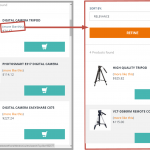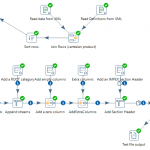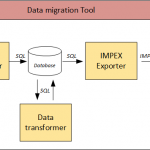
The MoreLikeThis search component (MLT) enables users to query for documents similar to a document in their result list.
I managed to create a working prototype, but the apparent simplicity of MLT integration nevertheless obscures some unexpected challenges and issues. See the details in the article and video. Read More »
This article explains how to disallow specific administrators from editing components of specific content slots. For example, “All administrators from the group “ContentAdmins” shouldn’t have access to any components of the content slot “Footer”. Read More »

Pentaho Data Integration (also known as Kettle) is one of the leading open source integration solutions. With PDI/Kettle, you can take data from a multitude of sources, transform the data in a particular way, and load the data into just as many target systems. For this tutorial, I would like to demonstrate how to convert an XML file containing category data into Category Impex file using Pentaho Data Integration. Read More »

Data migration, as a fundamental aspect of projects on modernizing legacy systems, has been recognized to be a challenging task that may result in failed projects as a whole. One of main reasons for time and budget overrun is the lack of a well-defined methodology that can help handle the complexity of data migration tasks. In this article I tell you about my own experience and my personal vision on the topic. I’ve been testing it in different projects where I was involved in for last 15 years. Data migration tools have been implemented by my teams and me in different programming languages, from Perl to Java. Read More »
I’ve done some findings that helped me get the hybris startup time down to 40-50%. This article provides several recommendations on how to make hybris/Tomcat to start up faster. Read More »
In one of our projects we have a requirement to exclude certain products from the total cart value calculation. So, for example, we would have a custom condition which would trigger a free gift action if the order total > 200 without including product A and product B on the order. This is a good example of the requirement that looks tough for hybris. I’m sharing my solution with you as well as a video demonstration and architecture details. Read More »
Hybris Cockpit Framework uses configuration files for customizing UI components. According to hybris documentation, there are three levels of customization: easy, medium and expert. This article is about “easy customization”, via XML files. In this article, I focus on one aspect of the cockpit UI configuration: cockpit UI configuration files from the folder resource/-config/. Despite the fact that the documentation of this part of hybris is not bad, I took some notes that formed the core of this article. Read More »
hybris Cockpit framework was introduced many years ago and now it is being decommissioned. However, due to various reasons, new projects and almost all of the existing are actively using this framework for extending hybris cockpits. It is one of the most challenging areas in hybris, because the framework is underdocumented, the code is very old. This article will shed some light on the topic and make difficult things clearer. I hope that this information will become a good addition to the official documentation. Read More »
What is a best strategy for sorting products on the category pages? How hybris built-in product sorting capabilities can be improved? What options came from the previous century and need to be taken out? Read More »
Every project in hybris is unique. The different set of modules, different configuration, different design, different customer expectations. Increasing demands and challenges make us create a highly customized solutions.
I was wondering what pieces of functionality would be good for any hybris project regardless of the specific purpose, requirement and expectations?
In this article, I will talk about three components that seem to be “must have” for all systems I can imagine. They are optional, and of course they will add some extra costs to your project. However, according to my vision, without them you spend more after the system is launched. Read More »
